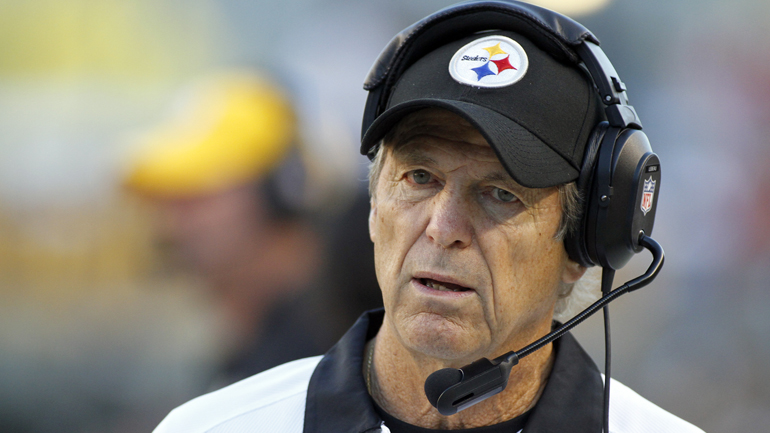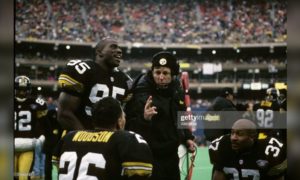Dick LeBeau is one of the most beloved football figures in the city of Pittsburgh, who helped return dominant defense to the Steelers in the 2000s as their defensive coordinator and helped pave the way for three trips to the Super Bowl, two of which resulted in more Lombardi Trophies.
His units were often dominant, routinely ranking in the top five in yards or points allowed, if not first overall. And so much of it was built around his use of the zone blitz, a concept that he helped design and popularize. LeBeau was on SiriusXM yesterday, and he talked about his approach to coaching and how it originated in his youth, as well as the debut of the zone blitz while he was the head coach of the Cincinnati Bengals.
“It was through trial and error, and it really went back to my junior high school days and physical education”, he said during the interview. “We would split up into teams and we’d play tournaments, and I’d be the coach and I’d work out plays and try to get an advantage for my team. A play here or there could make a big difference. And so as a coach, that was always how I approached coaching. I was always looking for a better way to do things”.
“The zone blitz came about as the offenses had caught up with the zero blitz, which is, now that the zone blitz has been so widespread, the zero blitz is coming back in, because it compliments it if you use it correctly”, LeBeau continued, in discussing the origins of the zone blitz as a countermeasure. “But they had all the answers. They knew who was coming to cover for the guy that was blitzing and they would break away and the quarterbacks were just, boom, boom, boom, and there weren’t too many things slowing up the offense”.
“I started to looking at ways to blitz the same people that they’d seen blitzing, only drop someone over in behind them to take all those automatic reads that they were cutting up the defenses with. And I’d like to say that it worked from day one, but we had to go down some blind alleys and jump off the diving board into an empty pool a few times”.
The first time went pretty well, though. As he recalls:
For the first time we used it, I’ll never forget it in an exhibition game, preseason game. Sam Wyche was our coach at Cincinnati. The quarterback took the hot read and, and threw a quick out to the tight end and then our corner, who was the trap corner, picked it off and went 65 yards for a touchdown. I said, ‘ooh, this might be something to work with here’. So, it launched its career very advantageously. Like I said, there was plenty of times that we had to go a different direction on things. If I go to a high school game, now I see kids playing zone blitz, so it makes me feel pretty good.
The zone blitz was one of the core features of LeBeau’s Steelers defenses, along with a stout run defense with two-gapping defensive linemen and inside linebackers who were responsible for cleaning up the middle, as well as driving the blitz.
Players like Aaron Smith, Brett Keisel, James Farrior, Larry Foote, and Lawrence Timmons were what allowed the zone blitz to be so effective. Through a combination of age and the changing offensive landscape, LeBeau’s model faded, his defenses were compromised, and that led to a parting of ways in the mid-2010s. He would wrap up his career with a couple of moderately successful seasons in Tennessee, while he now enjoys his retirement.








